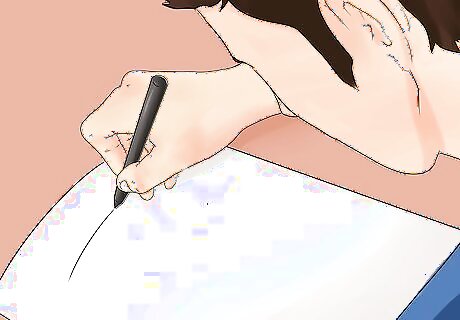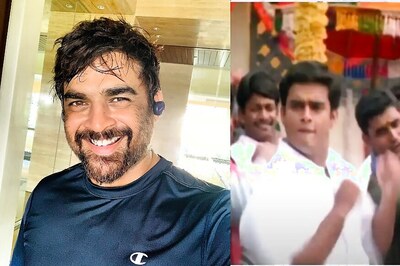
views
Generating Ideas for the Song

Create a list of words that relate to the girl you are writing the song for. These can be simple, general words like beautiful, special, and unique, or more descriptive words that are specific to the person, like dark haired, smart, and bold. This list will help you brainstorm lyrics for the song. So, don’t get too focused on working all of these words into a lyric. The idea is to start to build the vocabulary and lingo you’re going to use for the song. Because you're likely writing the song to please the object of your affections or compliment her, focus on positive words and phrases that you think she would enjoy hearing in a song about her.

Arrange these words into phrases or statements and say them or sing them out loud. This will help you determine which phrases have good implied rhythm and roll off your tongue easily. Put the phrases that sound good out loud into a list called “Possibles”, as they have lyrical potential.

Try to work the “Possibles” list into longer lines or connecting lines. Consider if there are any other phrases or words in your list that rhyme or almost rhyme. See if you can create a line or phrase that seems to answer an idea or question in your “Possibles” list.

Create a working title for the song. Aim for a general topic or phrase and don’t worry about being overly creative or descriptive. The title will likely change as you compose the song, but a working title will help you focus on a main theme or idea.
Composing the Song

Use basic song structure. The most common contemporary song structure is: verse/chorus/verse/chorus/bridge/chorus. Most listeners like this song form because it is catchy due to repetition, but varied enough to be engaging and interesting. A verse in a song has the same melody but different lyrics. The verse paints a picture of a scene, a situation, an emotion, and/or the subject(s) in the song. The chorus usually appears three or four times throughout the song, depending on how long the song is, and the lyric and melody remain the same each time it recurs. The chorus lyrics should sum up the heart of the song or the overall message. The title of the song may also appear in the chorus. The bridge has a different melody, lyrics, and chord progression from a verse or chorus. It provides a break from the repetition of the verse and chorus. The lyrics in a bridge often provide an insight or revealing moment. The bridge can also add on to or extend an idea or thought in the verse or chorus.

Focus on answering the most important question or stating the main idea of the song in the chorus. Often, the question to be answered in a song is: “What does this feel like?” or “How am I feeling?” Don’t forget to also try to integrate the title of the song in the chorus. For example, in the popular Bruno Mars song “Treasure”, he focuses on how special and “treasured” the girl is to him. In the chorus, he sings: “Treasure, that is what you are/ Honey you're my golden star/ You know you can make my wish come true/ If you let me treasure you/ If you let me treasure you.” In the chorus, Mars reinforces the main idea of the song with other adjectives that play off of a treasure, such as “golden star”, while also keeping the lines short and to the point, as well as including the title of the song.

Make at least one direct statement that describes what the song is about in the chorus. If you’re focusing on the physical beauty of a girl, describe this in the chorus. If you’re focusing more on your experiences with a girl or your desires for a girl, be sure to sum up these feelings in the chorus. If we use Mars’ “Treasure” as an example again, he makes several direct statements in the chorus of the song, such as “that is what you are”, “you know you can make my wish come true” and “if you let me treasure you.” In these phrases, he directly addresses the object of affections and tells her exactly how he feels.

Keep the verses simple and conversational. Structure your verses around the ideas in your chorus lyrics. Try to answer the question you picked or idea you’re focusing on in an open, honest way, and avoid formal or complicated language. For example, in Mars’ “Treasure”, the first verse is: “Give me all, give me all, give me all your attention baby/ I got to tell you a little something about yourself/ You’re wonderful, flawless oh you’re sexy lady/ But you walk around here like you wanna be someone else.” In this verse, Mars starts the conversation with the girl by telling her to give him her attention because he has something to tell her. He then tells her he think she’s “wonderful” “flawless” and “sexy”, but notes she doesn’t seem to realize how valuable she is (“wanna be someone else”). So, this verse ties into the idea of treasuring her, or seeing her worth and valuing that. It’s a good introduction to the main idea of the song and lets the listener know what they’re in store for.

Sing your lyrics out loud to find a melody. To create a good melody, you need good pitch, phrasing, and rhythm. When you talk, you are likely already displaying all of these elements. But in a song, these elements are exaggerated and there is more repetition. So singing the lyrics will help you find a melody that is suitable for a song. Use the melodic element of speech to give your songs added emotional impact. Changing the pitch in your voice so it goes up at the end of a question or flattens out when you’re being sarcastic will add emotion to the song. In most songs, the chorus will sound more urgent than the verses, and it will use a higher note range. So try to raise the pitch of your voice when singing the chorus. In Mars’ “Treasure”, he adds in an “Oh whoa-oh-oh” before the bridge to give the song a sense of urgency and melody. The bridge is the big lead into the final climactic chorus. Using a melody that rises and chords that build intensity will help your final chorus shine. Don’t be afraid to add “ohs” or “ahs” to the chorus or bridge to add emotional impact.

Use an instrument to help you put the song together. Strumming along to a guitar or playing a piano or keyboard as you sing your lyrics will help you create chords and chord progression. Using an instrument to compose the song will also help you find the right pitch for the melodies in the song. If you don’t play an instrument, ask a friend who does to play along as you compose. If you’d like to learn how to play chords on a guitar or piano, there are several learning methods available online.
Practicing and Presenting the Song

Play the song from beginning to end several times, preferably with an instrument. This will ensure you are comfortable playing the song live and can pour all your feelings and emotion into your performance.

Show the song to someone else for feedback. Depending on how personal the song is, it’s always best to get an outside opinion of your creative work. Try to show the song to someone who is close to the girl you are interested in, or who knows her well and can give you specific feedback about whether or not she would appreciate it.

Set the scene and present the song. Maybe you want to demonstrate a very public display of affection by performing the song spontaneously in a public place or perhaps you’re more into the idea of an intimate performance in a romantic setting. Whichever way you decide to present the song, make sure you do so confidently, honestly, and full of feeling.




















Comments
0 comment